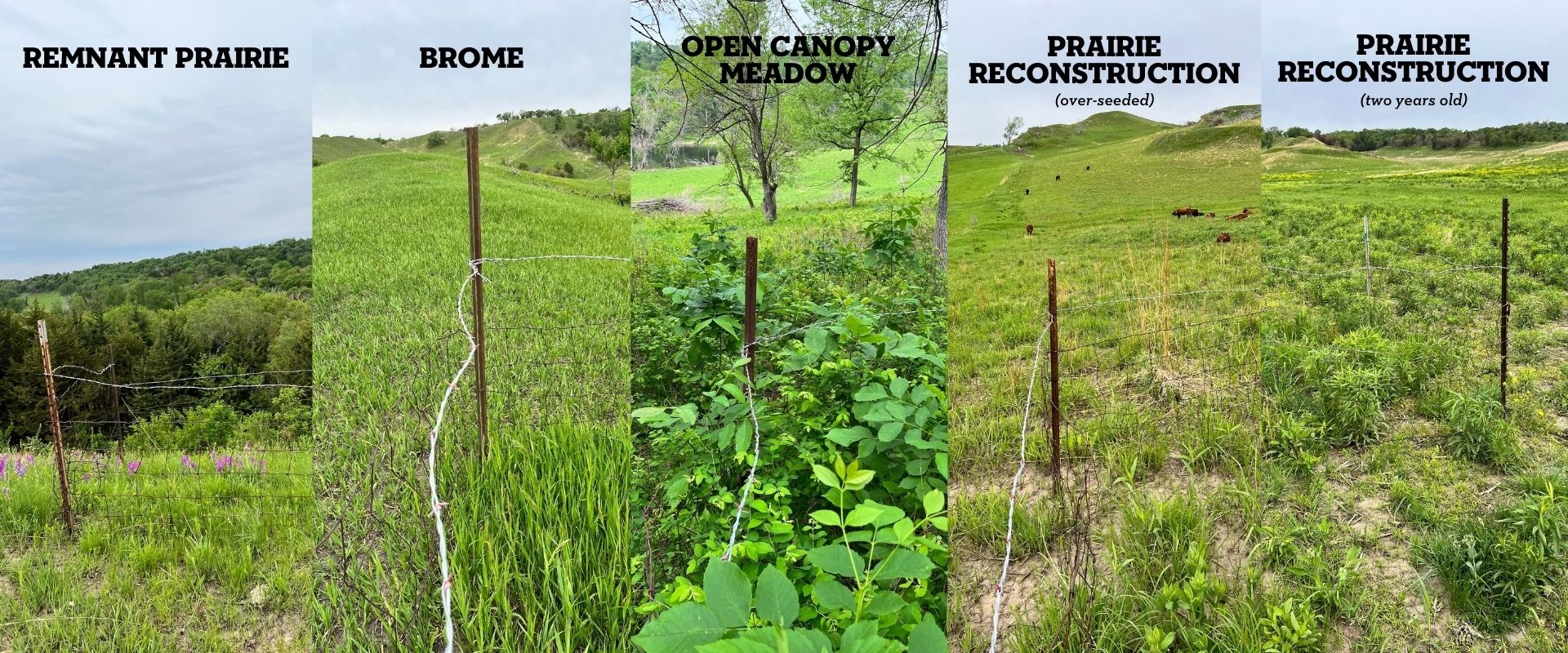These popular topics are heating up. Explore today's most viewed pages.
As you may have seen in the pun-filled article “Cattle: A Double-Edged Sward...” by Aric Ping, cattle have been happily grazing a portion of Hitchcock Nature Center since early April. As Aric points out, we are prescribing a grazing regimen to reach a desired outcome: combating non-native species like smooth brome to encourage the growth of desirable native species. As we begin to scale up grazing at Hitchcock we want to measure our “success” and share what we learn.
In order to measure success, we need to listen to and observe the land. We set up exclosures, which are areas fenced off from cattle, within the pasture to have a side-by-side comparison of the effects of grazing. We have been taking pictures of these exclosures once a week to show the differences, some of which are listed below.

These exclosures are set up in five different types of cover:
Sidenote: South Poll (a breed of cattle) calves are cuuuuuute!!!

But, firstly: Cattle LOVE recently burned grass!!
We use annual fire at Hitchcock which creates a patchwork of burned, partially burned, and totally unburned fuel across the landscape. Cattle have almost entirely avoided the unburned sections and can’t get enough of the burned grass, especially brome. This grazing has significantly decreased the number of seed heads present on brome. This decrease in seed and decrease in plant growth of the brome should allow native plants a chance to flourish.

Second, the unseasonably warm, 94 degrees in early May (holy COW!!) weather has caused the warm season grasses (Indian Grass and Big Bluestem) in the reconstructed prairies to grow vigorously.
It has been said that Big Bluestem is the ice cream of the cattle world, and the cattle have been enjoying an ice cream buffet for the past few weeks. Allowing the cattle time to feast at this buffet will help set back some of those dominant warm-season grasses and allow other native plants a chance to flourish.
Third, the cattle have virtually avoided the remnant prairie ridgetops.
We don’t have a great reason for why thus far but it is one thing we are paying attention to and striving to learn what the land is telling us. Although we do not fully understand why the cattle have avoided these areas, it can be good news for us as well. Iowa has less than .1% of remnant prairie left in the state so we want to be sure to avoid adverse effects on the remnant areas here at Hitchcock.
Here are some thoughts from Bill of Little Mountain Ranch & Garden in Fort Calhoun, NE, where our borrowed grazers are from:
"I'm confident one of the main things going on is because the herd has unrestricted access to the whole pasture, they are seeking out the most nutritious and palatable plants. Initially, it was the brome in burned areas, and with the heat, it's been the emergence of warm-season grasses like Big Bluestem and Indian Grass. Similarly, I think they are avoiding the native prairie ridge tops because there is more nutritious forage elsewhere, particularly in the burned areas where the post-burned grass has better nutrient uptake and is more attractive to a hungry bovine!"
Fourth, THANK YOU!
We set up our fencing to include hikers into the cattle pasture. One of my favorite parts of walking the pasture is seeing your hiking boot prints right next to the cattle prints. So, thank you again for making this a success and helping us continue to increase grazing in the coming years.
There is much more left to learn from the land!! In the last week, we have set up fencing on the South end of Hitchcock (which is not open to the public) and will continue to learn from the land and watch those cute calves grow.